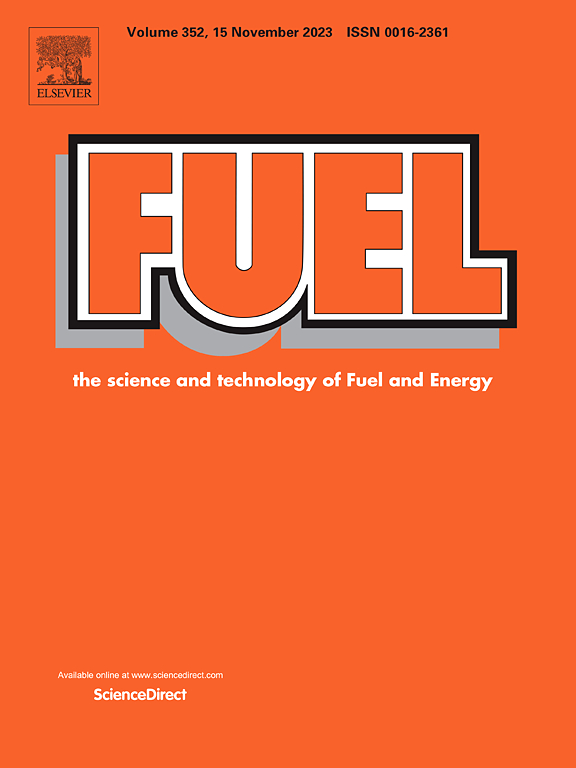Effect chain of fuel disintegration of liquid fuel jet evaporating in hot crossflow
IF 6.7
1区 工程技术
Q2 ENERGY & FUELS
引用次数: 0
Abstract
Focusing on liquid jet in crossflow (LJICF) systems, two different liquid fuels (Jet A and Gasoline) are examined to analyze the effects of two different crossflow temperatures on a chain of four consecutive physical processes (atomization-evaporation, spray dispersion, turbulence-evaporation interaction, and turbulent mixing). For this purpose, a novel approach that integrates phase change within a seamless coupling of the Volume of Fluid (VOF) method and Lagrangian Particle Tracking (LPT) approach within a Large Eddy Simulation framework is developed and applied. Thereby, Adaptive Mesh Refinement (AMR) is integrated to dynamically refine the liquid–gas interface while allowing for reducing computational costs. The phase change is considered at both the gas–liquid interface in VOF and the dispersed Lagrangian droplets. The atomization process is analyzed in terms of instabilities, breakup modes and penetration length. The atomization-evaporation interaction is pointed out through the impact of temperature on the breakup monitored by means of a breakup regime diagram. The induced turbulence-evaporation interaction is measured by an evaporation Damköler number introduced in this paper. The increasing evaporation Damköhler number with streamwise distance indicates a transition from turbulence-dominated to evaporation-dominated behavior, highlighting improved evaporation rates and mixing efficiency at higher temperatures. Evaporation enhances turbulent kinetic energy and mixing, particularly for Gasoline, while also affecting vortex dynamics. The resulting turbulent mixing is retrieved by appropriate turbulent mixing indices. Comparisons of flow visualization, penetration length, droplet statistics and total liquid mass flux with available experimental data agree well confirming the predictive capability and reliability of the developed approach.
求助全文
约1分钟内获得全文
求助全文
来源期刊

Fuel
工程技术-工程:化工
CiteScore
12.80
自引率
20.30%
发文量
3506
审稿时长
64 days
期刊介绍:
The exploration of energy sources remains a critical matter of study. For the past nine decades, fuel has consistently held the forefront in primary research efforts within the field of energy science. This area of investigation encompasses a wide range of subjects, with a particular emphasis on emerging concerns like environmental factors and pollution.
 求助内容:
求助内容: 应助结果提醒方式:
应助结果提醒方式:


